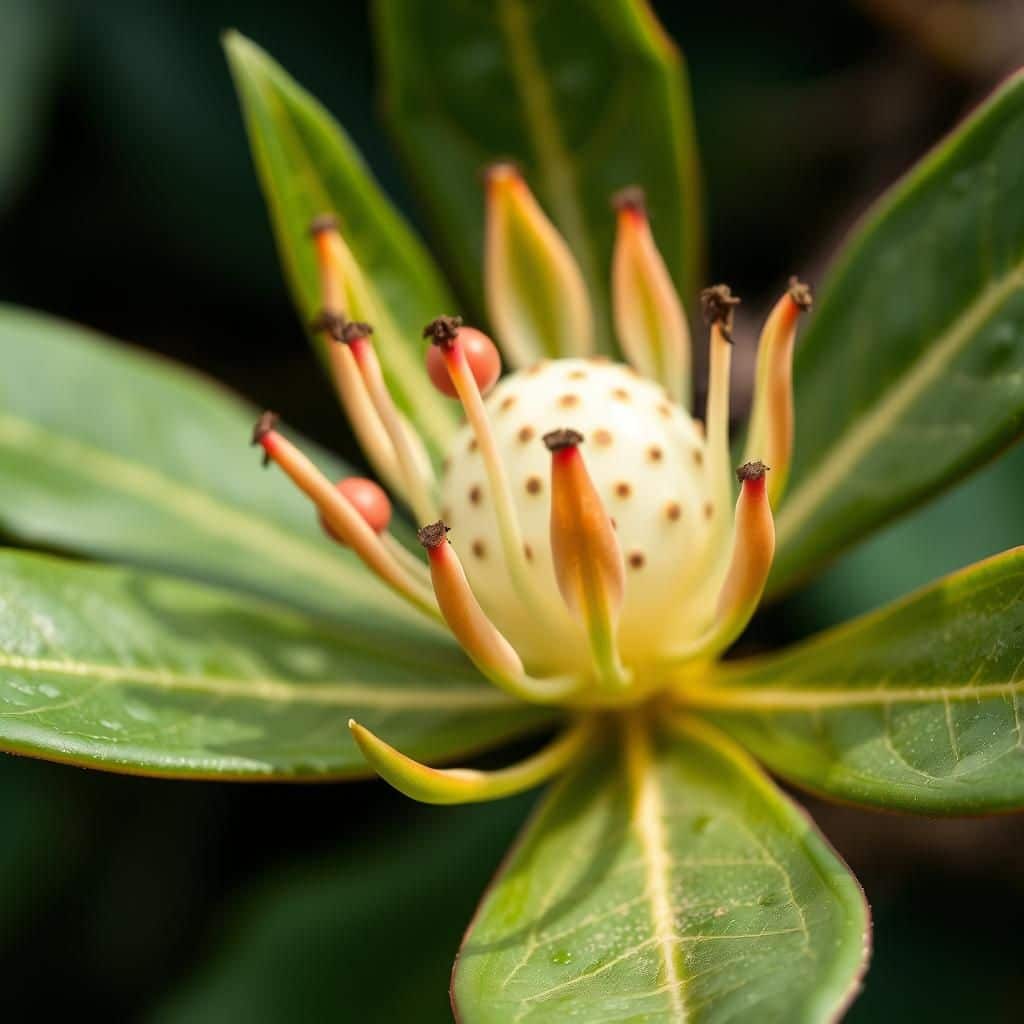Can You Eat Lilly Pilly Berries? Discover Their Benefits and Uses!

Lilly Pilly berries, often overlooked in the culinary world, are a hidden gem packed with flavor and health benefits. Native to Australia, these vibrant fruits range in color from pink to purple and are not only visually appealing but also rich in antioxidants, vitamins, and minerals. As more people seek natural and nutritious food options, the versatility of Lilly Pilly berries in cooking and health has gained popularity. In this article, we will explore the benefits of consuming Lilly Pilly berries, their various culinary uses, and how you can incorporate them into your daily diet for enhanced wellness and flavor.
Can You Eat Lilly Pilly Berries?
Yes, you can eat lilly pilly berries, which are not only safe for consumption but also offer potential health benefits. These berries, which belong to the Myrtaceae family and are native to Australia, are known for their tangy flavor and can be enjoyed fresh or used in various culinary applications. They can be eaten raw, cooked into jams, or used in desserts, adding a unique twist to recipes. Additionally, lilly pilly berries are rich in vitamin C and antioxidants, making them a nutritious choice. However, it is advisable to ensure that the berries are ripe and properly washed before consuming them to avoid any adverse effects.
Nutritional Benefits of Lilly Pilly Berries
Lilly pilly berries are a nutritious snack that provides several health benefits. They are particularly high in vitamin C, which is essential for maintaining a healthy immune system and promoting collagen production in the skin. Additionally, these berries contain antioxidants that help combat free radicals in the body, potentially reducing the risk of chronic diseases. Their low-calorie count makes them an excellent choice for those looking to maintain or lose weight while still enjoying a delicious treat.
Culinary Uses of Lilly Pilly Berries
In the culinary world, lilly pilly berries can be used in numerous ways. They can be consumed fresh or incorporated into foods such as jams, jellies, and sauces, offering a sweet and tangy flavor profile. Additionally, they can be added to salads, desserts, and baked goods, enhancing dishes with both taste and a pop of color. Chefs and home cooks alike appreciate these berries for their versatility and the unique flavor they bring to a variety of recipes.
Potential Allergies and Side Effects
While lilly pilly berries are generally considered safe to eat, some individuals may experience allergic reactions or side effects. Symptoms can range from mild irritation to more severe reactions, especially for those who are sensitive to the Myrtaceae family. It is advisable for first-time consumers to start with small quantities and monitor their body's response. If any adverse reactions occur, individuals should cease consumption and consult a healthcare professional.
See also:
How to Harvest Lilly Pilly Berries
Harvesting lilly pilly berries is typically done during the summer months when the berries have ripened fully. The berries should be picked when they are plump and bright in color, indicating they are ready for consumption. It is important to wear gloves while harvesting to avoid any skin irritation from the leaves or stems. After collecting the berries, they should be gently washed under running water to remove any dirt or insects before being consumed or prepared for cooking.
Growing Lilly Pilly Trees
Lilly pilly trees are relatively easy to grow in a variety of soil types, provided they are in well-drained locations with plenty of sunlight. These trees thrive in subtropical to temperate climates and can reach heights of up to 10 meters. Regular pruning encourages bushier growth and increases berry yield. To promote healthy growth and fruit production, it is beneficial to provide these trees with organic fertilizers and ensure adequate water supply, particularly during dry spells.
| Aspect | Detail |
|---|---|
| Nutritional Value | High in Vitamin C and antioxidants |
| Consumption | Can be eaten fresh, in jams, or desserts |
| Allergies | Potential for allergic reactions in sensitive individuals |
| Harvest Time | Primarily during the summer months |
| Growing Conditions | Well-drained soils with ample sunlight |
The Nutritional Value of Lilly Pilly Berries
Lilly Pilly berries are not only delicious but also provide a range of nutritional benefits. These berries are rich in vitamins such as Vitamin C, which can boost the immune system and help with skin health. They also contain antioxidants, which are crucial for fighting free radicals in the body. Additionally, the presence of dietary fiber in Lilly Pilly berries helps enhance digestive health and can aid in maintaining a healthy weight. Their low-calorie count makes them an excellent choice for those looking to add nutrient-dense fruits to their diet without excessive calories.
Health Benefits of Lilly Pilly Berries
Lilly Pilly berries offer various health benefits due to their high antioxidant content. These antioxidants play a vital role in reducing inflammation, lowering the risk of chronic diseases, and promoting overall well-being. The berries’ high Vitamin C content further aids in strengthening the immune system, making them a great addition to a health-conscious diet. Furthermore, they may help improve skin quality and reduce signs of aging, thanks to their capacity to combat oxidative stress.
Culinary Uses of Lilly Pilly Berries
In the kitchen, Lilly Pilly berries can be enjoyed in numerous ways. They can be eaten raw as a fresh snack or added to dishes for a sweet-tart flavor. These berries are often used in making jams, jellies, and sauces, as their unique taste adds a refreshing twist. Additionally, they can be infused into beverages like smoothies and cocktails for an adventurous palate. Their versatility allows for creative culinary experiments, pleasing many food enthusiasts.
See also:
Growing Lilly Pilly Berries
Growing Lilly Pilly trees can be an enriching experience, as they thrive in various climates, particularly in warm and humid regions. These evergreen trees require well-draining soil and can adapt to different light conditions, though they flourish best in partial shade. They can be easily propagated from seeds or cuttings, and once established, they are relatively low-maintenance. Regular watering, especially during dry spells, helps the plants yield a more abundant crop of berries, maximizing the harvest for culinary use.
Preservation Techniques for Lilly Pilly Berries
To enjoy Lilly Pilly berries year-round, knowing some preservation techniques is beneficial. One common method is to make jams or jellies, which can capture the fruit’s flavor while extending its shelf life. Another technique is freezing the berries, which allows you to maintain their taste and nutritional benefits for several months. It’s essential to wash and dry the berries beforehand to prevent freezer burn. Dehydrating the berries is another option, creating a versatile ingredient for snacks or baking.
Potential Allergies and Precautions
While Lilly Pilly berries are generally safe to eat, it's essential to be aware of possible allergies. Some individuals may experience allergic reactions, including skin irritation or gastrointestinal distress after consuming the berries. As with any new food, it’s advisable to start with a small quantity to determine personal tolerance. Additionally, if you are unfamiliar with the tree species, ensure they are correctly identified, as some may not be suitable for consumption. Always consult a healthcare provider if you have concerns regarding allergies and food safety.
Questions from Our Readers
Can you eat lilly pilly berries?
Yes, you can eat lilly pilly berries. They are not only edible but also quite nutritious, offering various health benefits due to their high vitamin content.
Are lilly pilly berries safe to eat?
Lilly pilly berries are generally safe to eat; however, it is essential to ensure they are properly identified and ripe before consumption, as some plants can be toxic.
See also:
What do lilly pilly berries taste like?
Lilly pilly berries have a tart and slightly sweet flavor, often described as a mix between a cranberry and a cherry, making them excellent for use in jams, jellies, and desserts.
How can you prepare lilly pilly berries?
Lilly pilly berries can be enjoyed raw, or they can be used in a variety of recipes, such as smoothies, pies, or even as a flavoring in sauces and dressings.

If you want to read more articles like Can You Eat Lilly Pilly Berries? Discover Their Benefits and Uses!, we recommend you check out our Shrubs category.
Leave a Reply
Related Articles